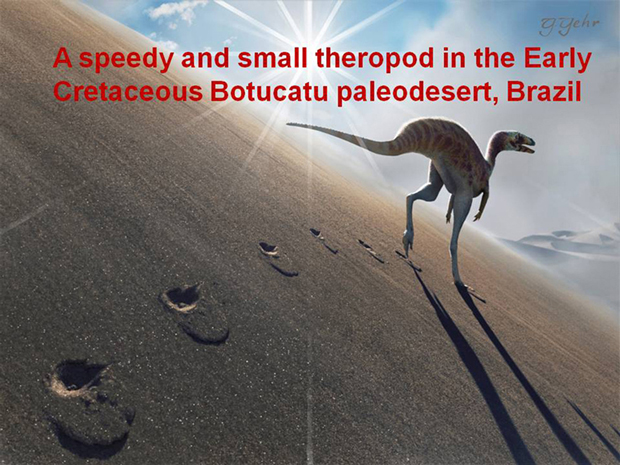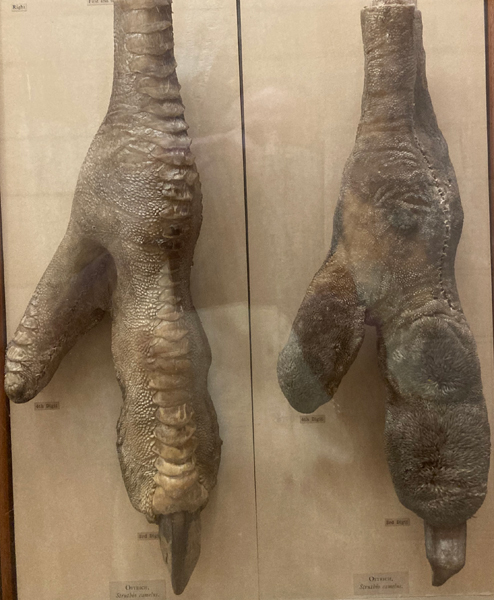Researchers have erected a new ichnogenus and ichnospecies of theropod dinosaur based on fossil tracks. The dinosaur has been named Farlowichnus rapidus.
The trackways come from the Lower Cretaceous Botucatu Formation of Brazil. The sandstones preserve a variety of trackways including dinosaurs. The tracks were made when animals traversed the extensive dune fields that once existed in this ancient desert. The sandstones of Botucatu Formation originally covered a land area estimated to be at least 1,300,000 km2, an area larger than the Gobi Desert. The ancient sandstones of the Botucatu Formation represent the largest fossil desert known to science.
Farlowichnus rapidus
The three-toed prints that led to the erection of the new dinosaur ichnogenus Farlowichnus were donated to Brazil’s Museum of Earth Sciences (Museu de Ciências da Terra) in 1984. The stride pattern indicates a small biped probably less than a metre tall. This dinosaur was probably carnivorous and fleet-footed, its light body able to traverse the dunes without disturbing the sands too much. This permitted the prints to be preserved.

Picture credit: Cretaceous Research
Unique Characteristics
The tracks differ from other theropod ichnogenera. The footprints have a relatively large and very wide digit III and small, short, pointed, bladelike outer digits. The most significant characteristic is that digit II is longer and more robust than digit IV. As a result of this unusual morphology, the general outline of the footprint reminded the scientists of a water droplet. Although three toes are in contact with the ground (a tridactyl print), most of the weight would have been supported by the oversized digit III, making the foot essentially monodactylous.
A similar foot morphology is seen in living archosaurs today. The ostrich (Struthio camelus) walks on two toes (digits III and IV). Digit III is much more robust and supports most of the bird’s weight.

Picture credit: Everything Dinosaur
Ancestors of Noasaurs and Velocisaurs
The ichnogenus name honours the palaeontologist James O. Farlow, for his extensive work on dinosaur trace fossils. The species name “rapidus” reflects the likely habits of this small theropod. It was probably able to run fast, and it was extremely agile.
Writing in the academic journal “Cretaceous Research”, the authors of the scientific paper speculate that Farlowichnus was an ancestor of other theropod clades such as the noasaurs and velocisaurs.
To read about the discovery of the noasaur Vespersaurus paranaensis: First Dinosaur from the Caiuá Group of Brazil.
The scientific paper: “Farlowichnus rapidus new ichnogen., new ichnosp.: A speedy and small theropod in the Early Cretaceous Botucatu paleodesert (Paraná Basin), Brazil” by Giuseppe Leonardi, Marcelo Adorna Fernandes, Ismar de Souza Carvalho, Julia Beatrice Schutzer and Rafael Costa da Silva published in Cretaceous Research.
Visit the award-winning Everything Dinosaur website: Everything Dinosaur.






Leave A Comment